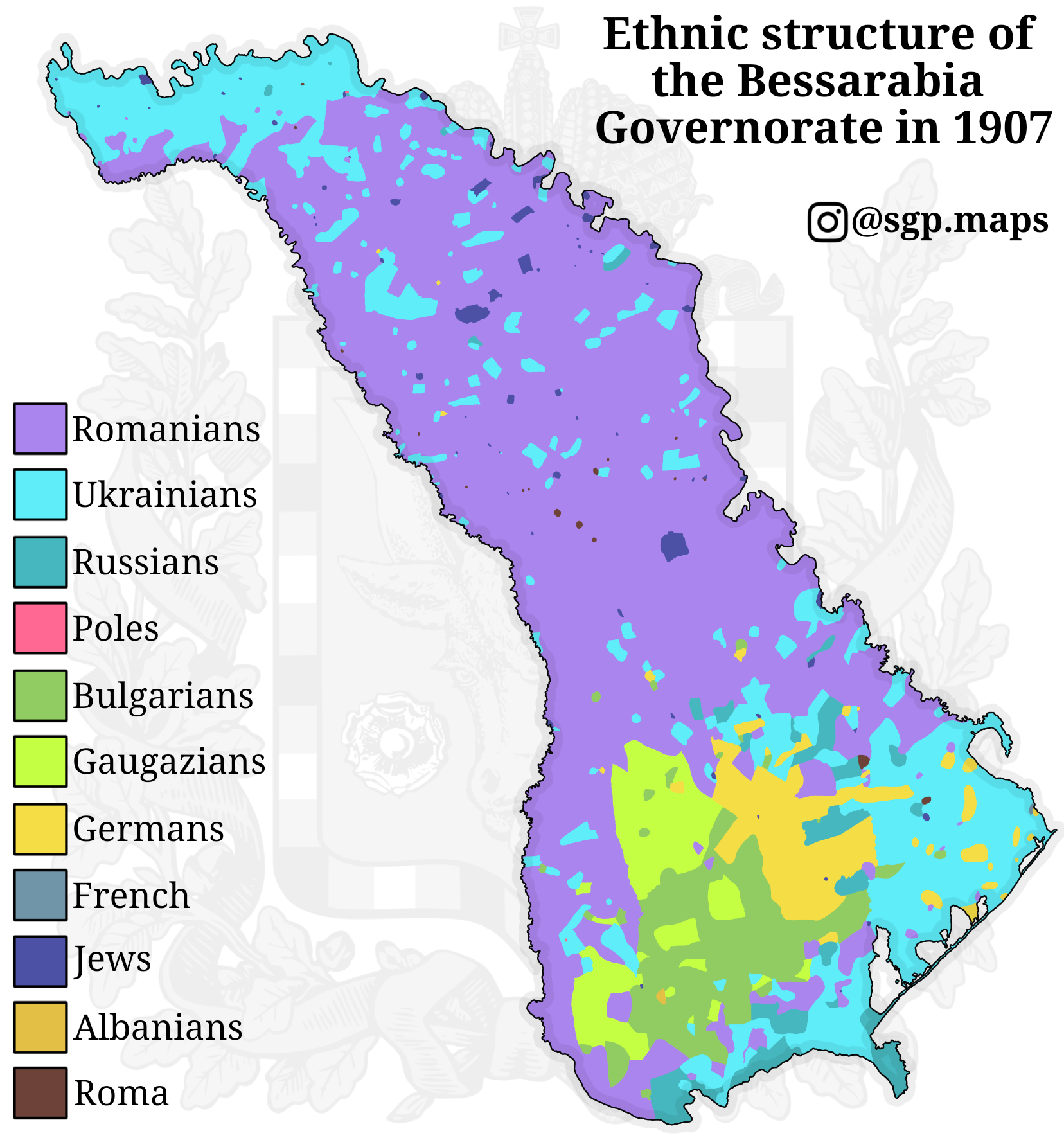Ethnic Map of Bessarabia in 1907


Alex Cartwright
Senior Cartographer & GIS Specialist
Alex Cartwright is a renowned cartographer and geographic information systems specialist with over 15 years of experience in spatial analysis and data...
Geographic Analysis
What This Map Shows
The "Ethnic Map of Bessarabia in 1907" provides a detailed visualization of the ethnic composition of the Bessarabia Governorate during a significant historical period. Bessarabia, located between the Prut and Dniester rivers, was a melting pot of cultures, with diverse ethnic groups coexisting in a relatively small area. This map effectively illustrates the distribution of various ethnicities, highlighting the complexities of identity and cultural heritage in this region at the turn of the 20th century.
Deep Dive into the Ethnic Structure of Bessarabia
Bessarabia, during the late 19th and early 20th centuries, was characterized by a unique ethnic mosaic. The major ethnic groups included Romanians, Russians, Ukrainians, Jews, and Gagauz, among others. According to the map, Romanians formed the largest ethnic group, comprising nearly half of the population. This dominance can be traced back to the historical and cultural roots of the region, as Bessarabia was part of the Principality of Moldavia before being ceded to the Russian Empire in 1812.
Interestingly, the Jewish population was also significant, particularly in urban areas such as Bălți and Chișinău. They played a vital role in the economic life of Bessarabia, contributing to commerce, craftsmanship, and education. However, the presence of anti-Semitic sentiments during this time often led to tensions and challenges for this community.
Russians, who settled in the region following its annexation by the Russian Empire, made up a considerable portion of the population, especially in the northern districts. Their influence extended not only culturally but also politically, as efforts to Russify the region were prevalent during the late 19th century.
Ukrainians were primarily found in the western parts of Bessarabia, reflecting the fluidity of borders and ethnic identities that were common in Eastern Europe. The Gagauz people, a unique ethnic group of Turkic origin, were concentrated in the south, illustrating yet another layer of diversity within Bessarabia’s demographic fabric.
What’s fascinating is how these ethnic groups interacted with one another. Intermarriages were not uncommon, leading to a blend of traditions and languages that enriched the cultural landscape of Bessarabia. The map captures this vibrancy, showcasing both the harmony and the challenges faced by diverse communities living side by side.
Regional Analysis
Looking at the map through a regional lens reveals distinct patterns in ethnic distribution across Bessarabia. For instance, in the central part of the governorate, Romanians were predominant, which is not surprising given the historical ties to Moldavia. In contrast, the northern regions exhibited a higher concentration of Russians, particularly around cities like Bălți, where the influence of Russian culture was more pronounced.
The southern areas, particularly around Comrat, were home to the Gagauz population, whose unique heritage is a testament to the region's diverse history. The mixed areas, especially in urban centers, show a fascinating blend of ethnicities that contributed to a rich cultural life but also led to social tensions.
For example, Chișinău, as the capital, was a microcosm of Bessarabia’s ethnic diversity. The presence of various ethnic groups created a vibrant urban culture but also laid the groundwork for conflict, especially during times of political upheaval. Understanding these regional distinctions helps to appreciate the complexities of Bessarabia’s historical narrative and the challenges it faced in the 20th century.
Significance and Impact
The ethnic structure of Bessarabia in 1907 holds considerable significance for understanding the broader historical and cultural dynamics of Eastern Europe. The tensions and interactions between different groups can be linked to later events in the region, especially during the tumultuous periods of World War I, the Russian Revolution, and the eventual formation of modern nation-states.
Today, Bessarabia is primarily divided between Moldova and parts of Ukraine, but the legacies of these ethnic compositions continue to influence politics and cultural identities in these countries. The patterns delineated in the 1907 map serve as a reminder of the historical complexities that shape contemporary issues related to ethnicity, nationalism, and identity in the region.
As we examine current trends, it’s essential to consider how historical ethnic distributions impact modern-day relations among these groups. Are there still remnants of the tensions seen in the past, or have they evolved into a more cohesive society? The ethnic map of Bessarabia in 1907 is not just a historical artifact; it is a lens through which we can better understand the ongoing narratives of identity and cultural coexistence in Eastern Europe today.
Visualization Details
- Published
- September 28, 2025
- Views
- 58
Comments
Loading comments...